Mat of European frog-bit
Image credit: Sigrid Resh
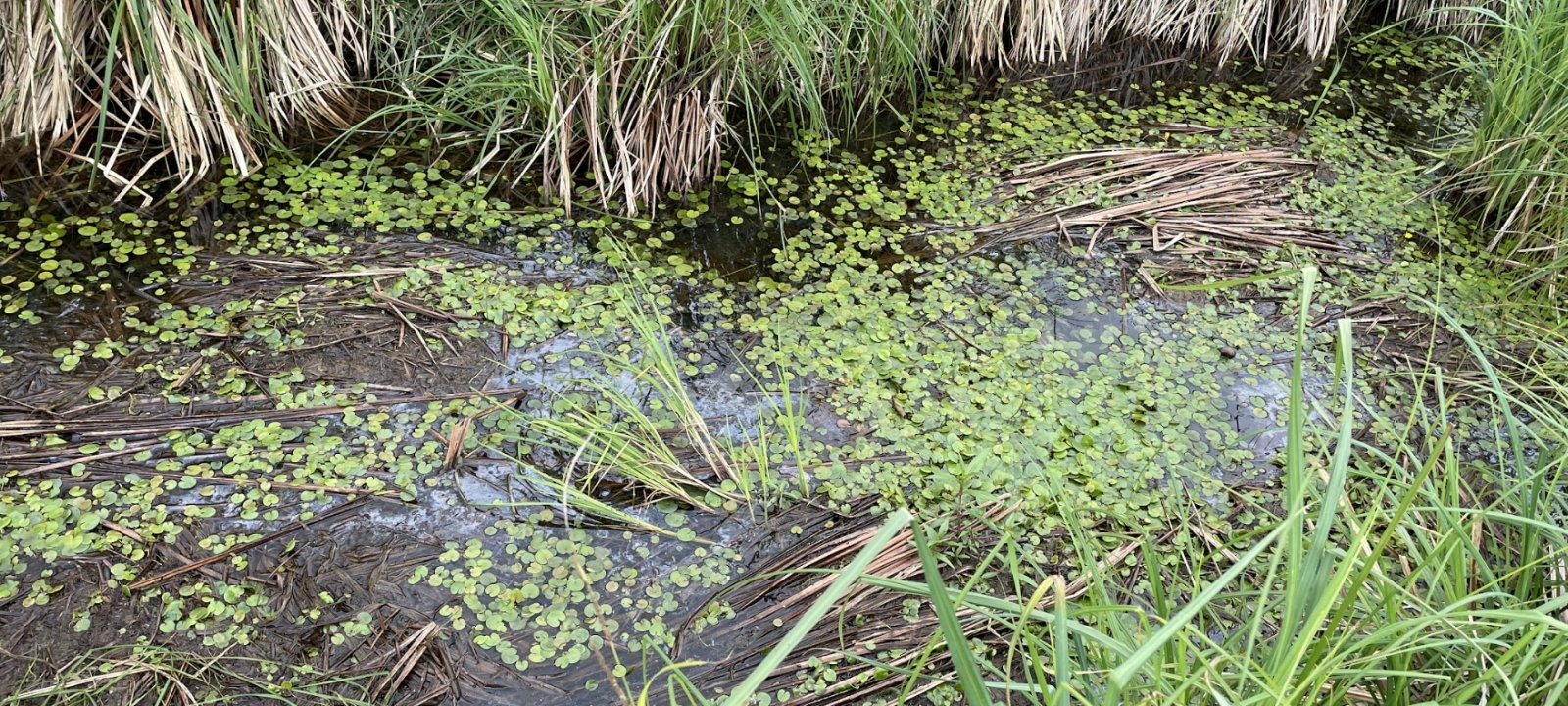
Mat of European frog-bit
Image credit: Sigrid Resh
A member of the Hydrocharitaceae family, European frog-bit (EFB) was initially introduced in the 1930s as an escapee from an Ontario arboretum. Populations can now be found throughout the Great Lakes watershed ranging from Lake Ontario to Michigan. Notable infestations are found in the St. Mary’s River on the eastern side of the Upper Peninsula and in northern Wisconsin’s Oconto County.
This free floating aquatic perennial can be found in shallow, slow moving water near the edges of lakes, streams, ditches and marshes. Common identifying features include:
As mentioned, EFB can resemble that of native water lilies. This is especially true when the lilies have not fully developed, demonstrating a smaller leaf size similar to that of frog-bit. If it is difficult to identify based on the leaves alone and no flower is present, look to the root system. Native water lilies are attached to a branched rhizome system embedded in the substrate, whereas EFB is not rhizomatous and only rarely anchors itself in the substrate in shallow waters. For more information, visit U.S. Geological Survey.
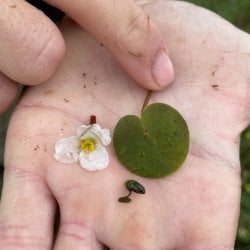
European frog-bit flower, leaf, and turion
Image credit: Sigrid Resh
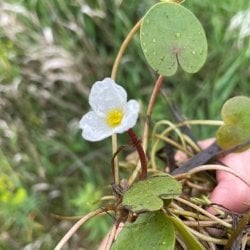
Individual European frog-bit plant. Notice the tangled clump of roots and stolons
Image credit: Sigrid Resh
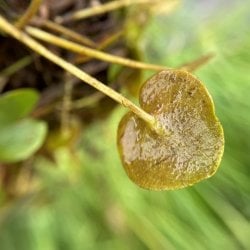
The underside of European frog-bit leaves can range in color from reddish purple to olive green
Image credit: Sigrid Resh
EFB can form dense, entangled, floating mats which can cover the water surface, thus clogging navigation and irrigation channels and disrupting a variety of recreational activities ranging from water skiing to fishing. Furthermore, infestations have the potential to reduce light, dissolved oxygen, and nutrient availability, negatively impacting native aquatic vegetation and the fauna which depend on it. While we do not have any confirmed EFB sightings in the Keweenaw yet, we’d like to keep it that way. See the following steps and Michigan’s Status and Strategy for EFB Management.
Note: It is unlikely and unrealistic for the average person to perform widespread chemical or physical management of European frog-bit. It is best to consistently monitor your local area for new signs of invasion in order to address the problem before the plant becomes fully established. If you do happen to come across such a site, reach out to your local invasive species management group who will have the proper resources and connections to handle the invasion.
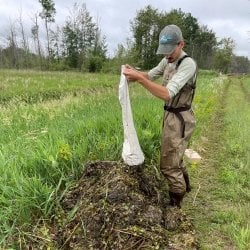
KISMA crew member dumping a bag of recently removed European frog-bit
Image credit: Sigrid Resh
If you do happen to remove EFB on your property, it would be a good idea to plant native species in its absence. Floating, large-leaved species like white water lily (N. odorata) and yellow water lily (Nuphar lutea) are great choices as they thrive in similar habitats and may crowd out the invader. Other species such as watershield (Brasenia schreberi) and native pondweeds (Potamogeton spp.) would also be advisable.